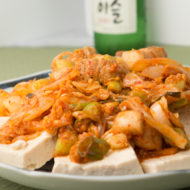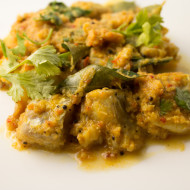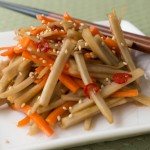Kimchi sundubu jjigae (Korean kimchi and tofu soup)
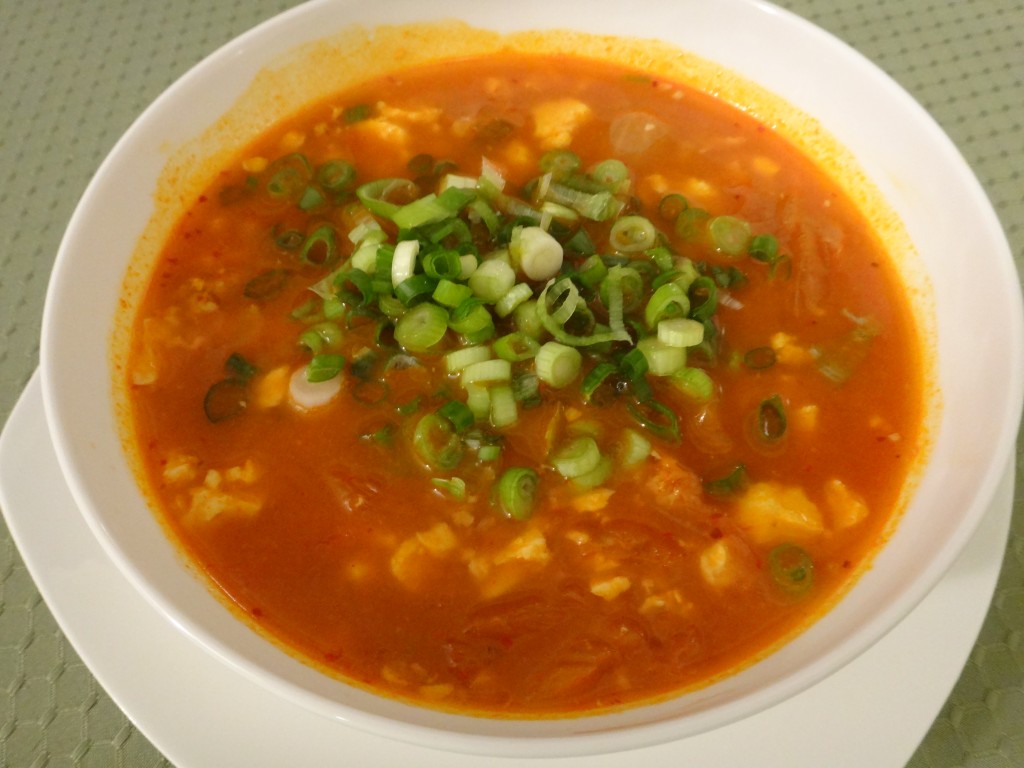
Its been well over a week since my last post and I apologize for the long break. As you may know, we had a spot of bad weather last week here in the northeast. And although the only inconvenience we suffered in upper Manhattan was a lack of freshly baked bread for a couple of days, other parts of the city and neighboring areas weren’t so lucky. Many were (and remain) inundated and without power. Under the circumstances blogging about food seemed somewhat inappropriate. But, life is slowly returning to normal so its now back to our regularly scheduled programming …
Hurricane season also marks the start of cold weather, perfect for hot and spicy stews and soups. Which brings me to this week’s topic: kimchi. Now, kimchi isn’t necessarily everyone’s cup of tea. Indeed, I can’t say I was instantly hooked. It took a while to get used to the funky smell, and even longer before I became familiar enough to start cooking with it, let alone make it. Now of course its an always-present item in the refrigerator. In fact, I often say, only half-jokingly, that I can’t imagine living in a city where one can’t buy kimchi within walking distance of my house. At midnight. (I suspect that all those cities which rank at the top of lists of ‘most liveable cities’ beloved of travel magazines would likely fail this test. I mean, Helsinki? Copenhagen? Seriously?)
But I digress. There are many kinds of kimchi, from plain-old napa cabbage to radish (kkakdugi), and cucumber (oi kimchi) to mustard leaves (gat kimchi). (For an amusing – and catchy! – paean to kimchi, listen to the “kimchi song” below. Its the theme song from a very entertaining drama about Korean cuisine.)
http://www.youtube.com/watch?v=MEnsHiPPSzM
While kimchi is perhaps most frequently eaten by itself it is also an amazingly versatile ingredient to cook with. One of my favorite dishes involving kimchi is that stalwart of Korean cuisine: kimchi jjigae. There are many variations of this dish, depending on the kind of protein used (pork, beef, seafood, etc.). But most versions involve tofu. Until recently I used to make this dish with regular tofu cut into cubes. This works just fine, but since I’ve discovered sundubu – Korean soft tofu – I’ve all but abandoned the regular kind. If you haven’t cooked with sundubu before, it comes in a tube (see picture below) which you slit open and out flows the tofu. Incidentally, this soup is best made with somewhat old and sour kimchi. Note, too, that kimchi jjigae is meant to be spicy. Very spicy. Obviously, this is relative. I always thought mine was pretty hot, but the first time I made it for a Korean friend, she was quite unimpressed and insisted on adding more gochuchang – and kept adding it – until I, literally, begged for mercy. Fortunately, while Korean red pepper – called kochukaru – is spicy, it doesn’t induce the tongue-falling-off feeling that other chilies do. Still, feel free to adjust the amount of kochukaru in the recipe below to suit your taste.
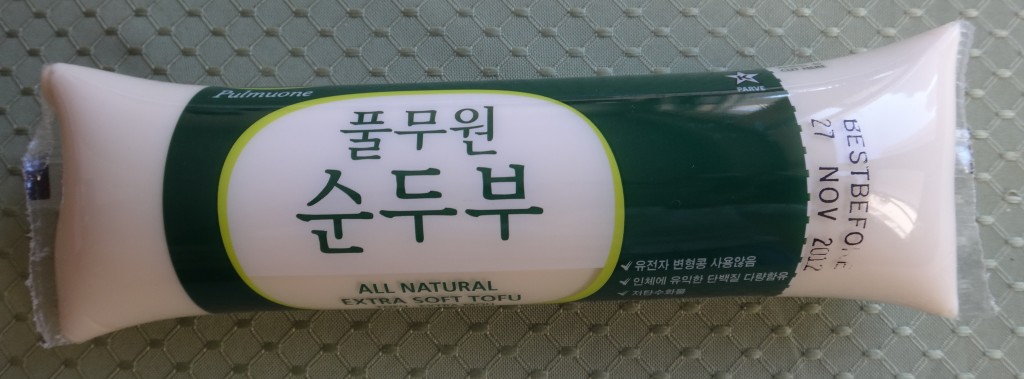
- 4 cups stock made of instant ago-dashi powder (see previous post) or water
- 1 tbsp sesame oil
- 5 cloves garlic, coarsely minced
- ½ lb ground pork
- 4-5 tbsp kochukaru
- ¾ cup cabbage kimchi, coarsely chopped
- 2-3 tbsp gochujang
- 2-3 tbsp soy sauce
- 2 11-oz packs sundubu (soft tofu)
- 5-6 scallions, diced
- Heat the oil over medium heat and fry garlic for 30 sec. Then add pork and fry for 3-4 min, using a wooden spatula to break up the meat, until cooked.
- Add kochukaru and kimchi and fry for another 2-3 min.
- Add stock (or water) and bring to a boil. Lower heat, cover, and simmer for 7-8 min.
- Add gochujang, soy sauce, and sundubu and mix.
- Simmer for another 4-5 min and adjust flavors.
- Garnish with scallions and serve.


